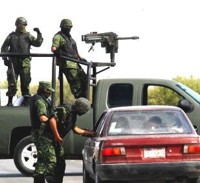The recent capture of several high-profile drug cartel capos has yet again propelled Mexico’s security situation into the spotlight. With last week’s arrest of important Zeta leader Ivan Velazquez Caballero, known as “Z-50” or “El Taliban,” the administration of President Felipe Calderón can now claim to have put 24 of the 37 most wanted drug cartel capos behind bars. While the reality of Mexico’s cartel-related violence is often shocking, much of the press coverage is more fiction than fact. In particular, three recurrent misconceptions surrounding Mexico’s security situation and drug cartels plague press coverage outside of Mexico and skew policymaking in Washington.
The first of these misconceptions is that drug cartels operate everywhere in Mexico, and that cartel-related violence impacts the entire country. The truth is that violence is concentrated in areas where cartels are fighting each other for dominance, and because the situation is dynamic, those territorial disputes shift. Tijuana and Ciudad Juárez, for example, were once violent hotspots that have since calmed considerably. Monterrey, on the other hand, used to be a safe haven for wealthy elites and international businessmen but is now overrun with cartel-related violence. Some areas, like the states of Michoacán and Tamaulipas, have been historically violent and will likely remain so because of their strategic locations -- Michoacán as an entry point for Colombian cocaine and methamphetamine-related chemicals from China, and Tamaulipas as a smuggling route into the U.S. Other states, such as those on the Yucatan peninsula, have been virtually unaffected by the violence in other parts of the country.
Some tourist areas have been impacted by drug-related violence. The beach town of Acapulco, for instance, was once known for its nightlife, but after cartel thugs rolled five decapitated heads onto the floor of a disco and violent retaliation followed, the nightlife has all but disappeared. However, most tourist destinations, like Cabo San Lucas and Cancun, remain safe. Mexico City, the nation’s capital, has been largely untouched by drug-related violence and has actually become a much safer city in recent years.

